Pre or Post Cruise in Rome

Slide title
Write your caption hereButton
Slide title
Write your caption hereButton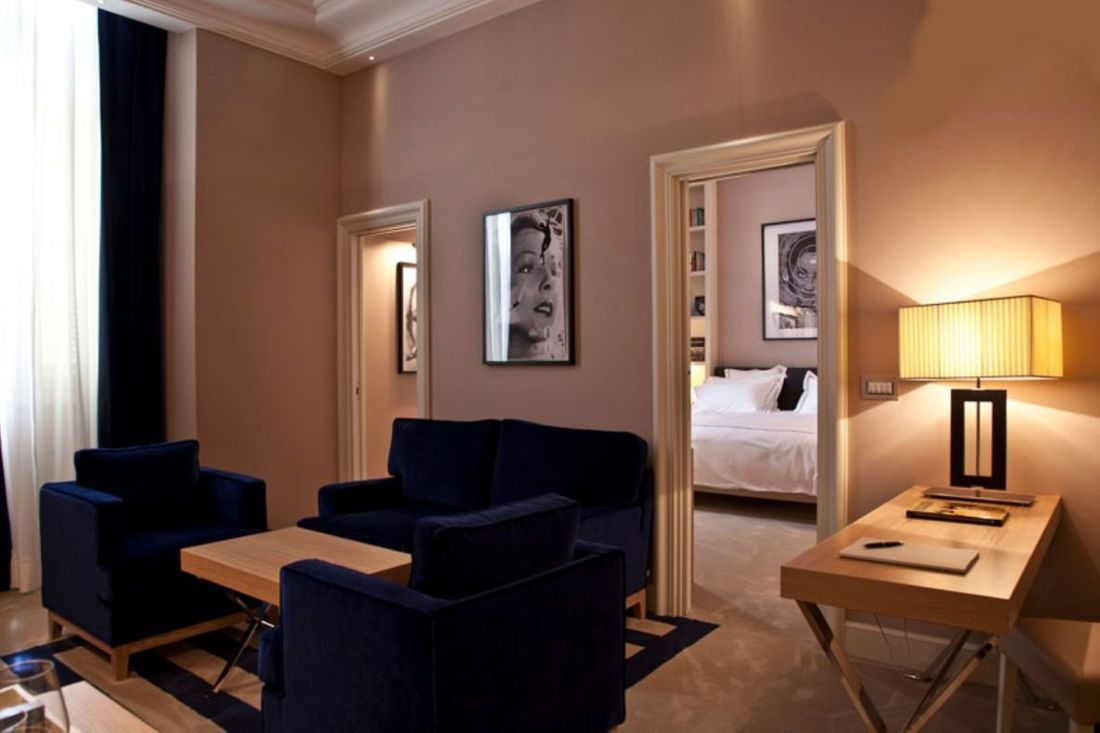
Slide title
Write your caption hereButton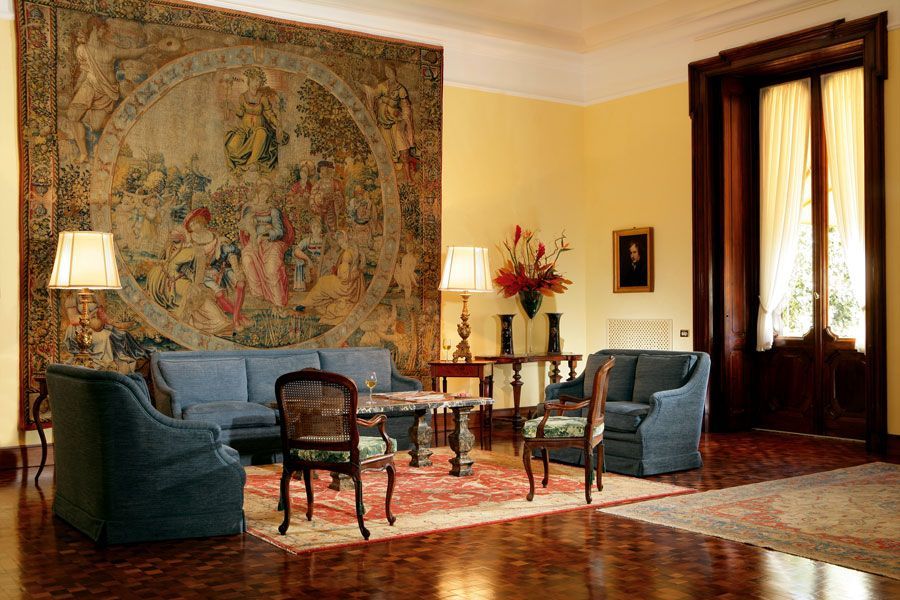
Slide title
Write your caption hereButton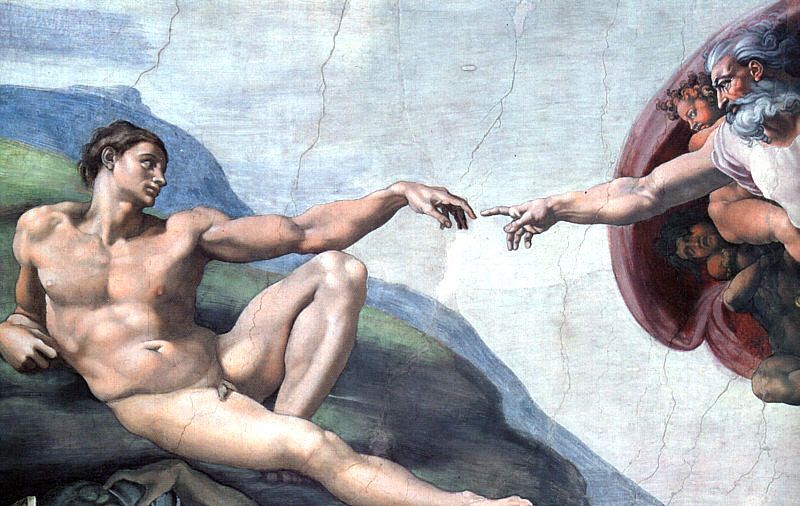
Slide title
Write your caption hereButton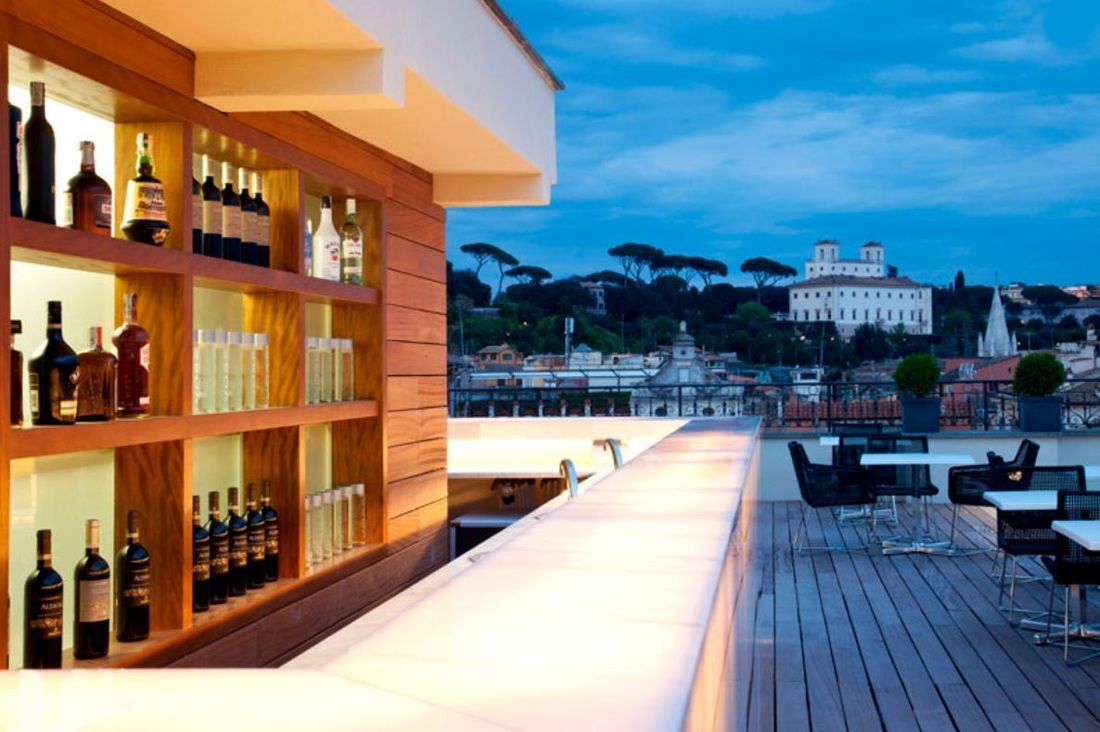
Slide title
Write your caption hereButton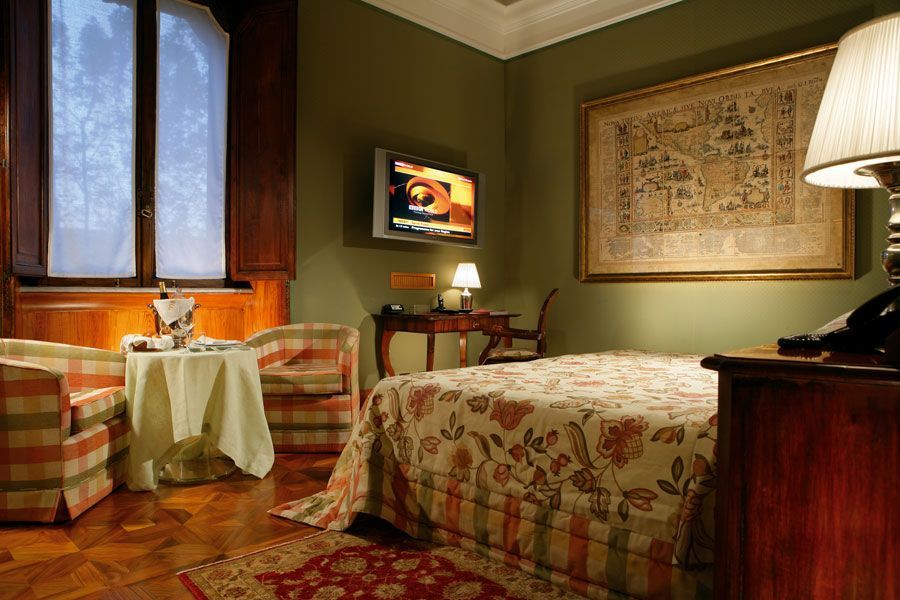
Slide title
Write your caption hereButton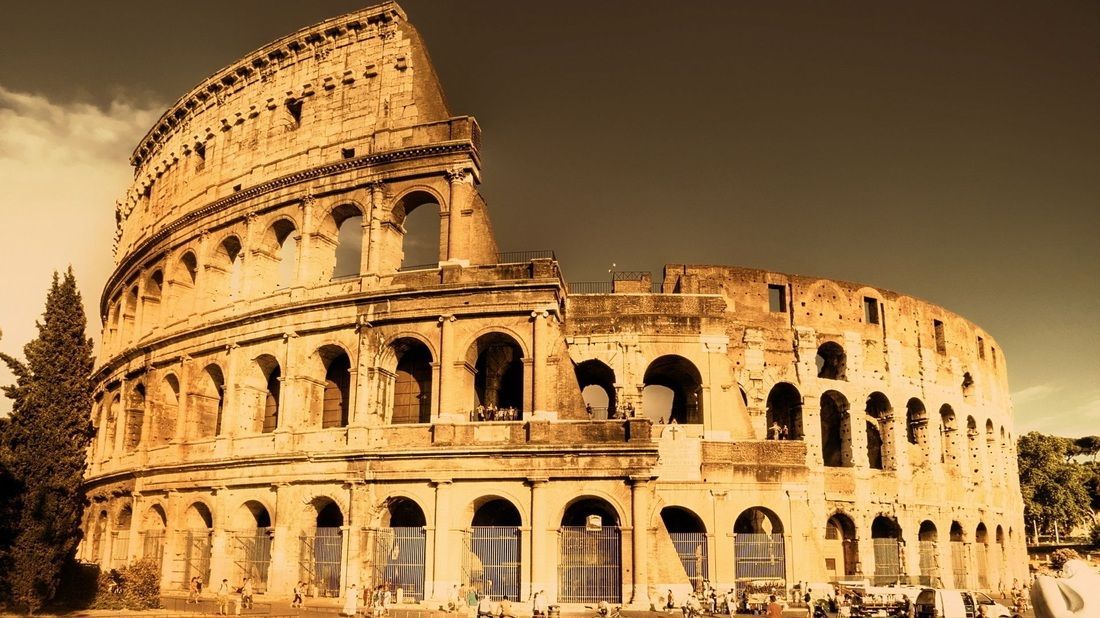
Slide title
Write your caption hereButton
Day One
Private Transfer from Rome FCO to Rome Hotel
Your English speaking driver will pick you up at FCO Airport and he will drive you to Rome by AC deluxe sedan car or AC deluxe minivan.
Hotel in Rome
OPTION 1
The First Luxury Art Hotel – 5-star
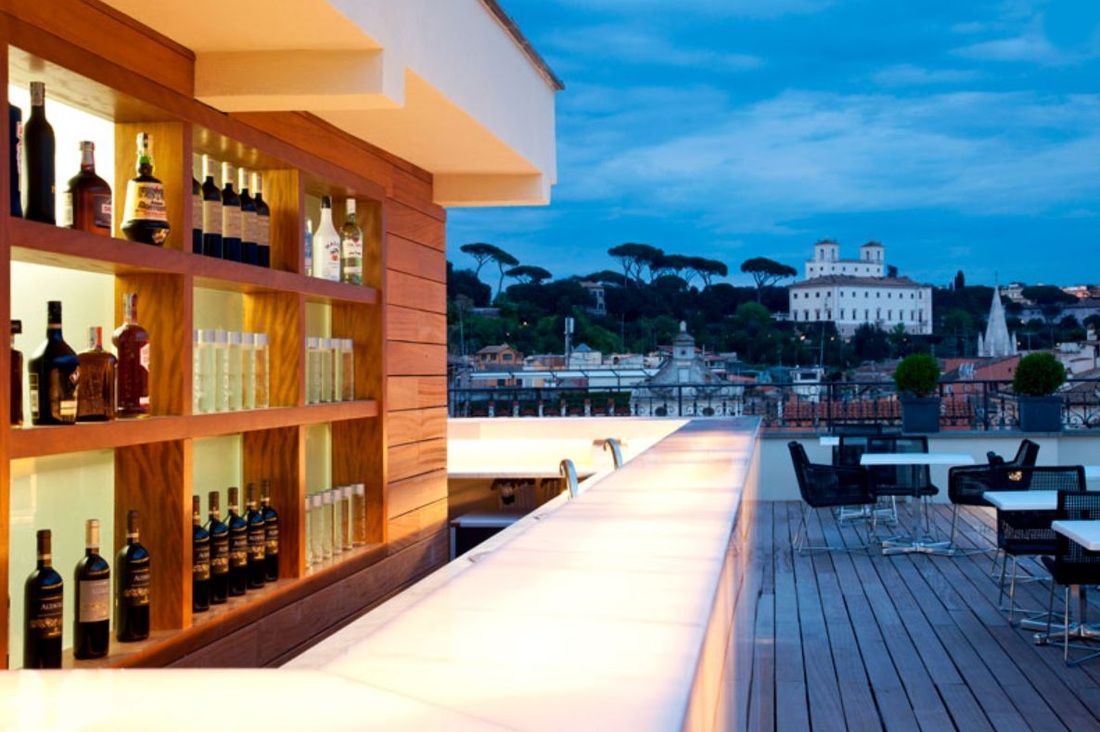
Inspired by contemporary art and design, and based on a modern and international concept, The First Luxury Art Hotel is located near Piazza del Popolo, just steps away from Piazza di Spagna and the Flaminio Metro stop.
The historic building, which dates back to the 19th Century, has been completely renovated based on the original architecture. The charming soul of the building and enchanting ambience of the surrounding lanes ensure guests a moving experience, rich with intriguing contrasts between history and modernity, between tradition and technology.
Classified as a 5-star luxury accommodation, THE FIRST Hotel has created a new philosophy of high hospitality. The common areas merge together into a single open space that allows visitors to experience the space it in its entirety.
Art is the soul of The First Luxury Art Hotel - infusing all spaces and merging with our philosophy of hospitality, it offers guests a one-of-a-kind sensory experience.
THE FIRST is a luxury hotel where you can experience a new concept of hospitality. Welcomed with a flute of champagne, guests find a unique cultural, culinary and sensorial experience awaiting them through our exclusive and personalized services.

OPTION 2
Villa Spalletti Trivelli
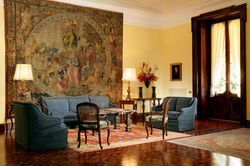
illa Spalletti Trivelli represents the ideal place to stay in Rome whether you visit the city to enjoy its beauties or for business. Located in the heart of the fashionable Eternal City, Villa Spalletti Trivelli, Count residence of the early XX century, with its 12 luxury bedrooms and suites, offers privacy and a personalised service for any guest wishing to enjoy comfort, relaxation and peace of mind. An image of nobility, quality, discretion, style and the attention to detail are the hallmarks of our Villa, creating a sense of home, of a very private world where the staff make your satisfaction their absolute priority and do their utmost to guarantee it at all times.The Biblioteca della Villa, cultural heritage bond-awarded library, is filled with beautiful bookcases with valuable, ancient books. All of the rooms in the Villa keep in line with their original early 20th century splendour and are characterized by a classical design which includes antique furniture, most beautiful “boiserie” and the refined fabrics. Quiet and exclusive, Villa Spalletti Trivelli retains the flavour of that era with its period decor.
Luxurious antiquity meets requisite modernity: all of our rooms are fully equipped with the latest of the contemporary comforts for our selective guest needs. The warm colors offer a comfortable and relaxing atmosphere. The beds are dressed with the finest of linens, assured to provide our guests with the well-deserved rest needed during a vacation or business trip. Any category of room you choose, you will be guaranteed with a high standard of service(including Evening Turndown Service) and comfort completed by the last modern appointments. Our twelve bedrooms & suites have got en suite marble bathroom with bath tub & deluxe XL shower and feature an exclusive courtesy line besides luxury finishing touch.
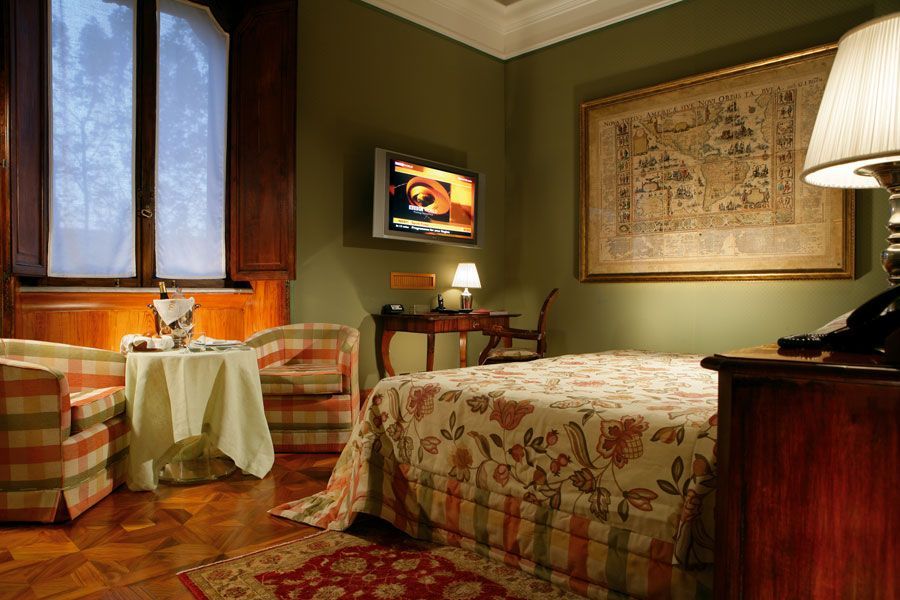
Amenities Summary:
Finest embroidered bed Linen
Anti-allergic mattress and pillows
Luxurious marble Bathroom with XL shower
Villeroy & Boch bath tab
Bath gown and slippers
Bath courtesy set (organic items)
Hair-dryer
Sumptuous Furniture
Antique drawings, maps, portraits and old prints
Sitting area or separate living room
Writing desk
Plasma Flat screen TV 42inc.
Direct dual telephone, set (1 cordless + 1 on bedside table)
Satellite TV and musical channels
Air conditioning independently controlled
Internet ADSL dedicated modem access
Private Safe
Wide large windows
Non-smoking rooms and suites available
PC laptop on request
Rate includes:
Rich homemade buffet breakfast
Complimentary mini-bar in the room
Complimentary Courtesy Bar in the Sala degli Arazzi
Daily newspaper
Free access of the Gym
Use of Turkish Bath according to Villa Spalletti’s schedule Service
OPTION 3
Hotel Barocco – 4-star

Overlooking Bernini's Triton Fountain, the Barocco is a boutique hotel with just 41 rooms (and a staff of 22!) located in an old aristocratic building in the heart of Baroque Rome. Carefully refurbished in 2010 and 2012 to offer guests superior standards of comfort and style, the Barocco has followed the example of leading international hotels, becoming 100% smoke-free. Attention to detail, absolute cleanliness, unique and highly sought-after rooms, an atmosphere from times past, and 21st century technology, make guests' stay at the Barocco a warm Italian experience full of magic.
The entrance on the quiet Via della Purificazione leads into the cosy, refined hall with its sofas covered in beige and orange-striped damask, oriental carpets and trompe l'oeil walls with scenes of classical Rome. The intimate and relaxing breakfast room next to the hall features elements in cherry-wood. The atmosphere of this exclusive hotel is one of elegance, reserve and comfort.
Spacious and excellently furnished in the Empire style, the rooms feature a small desk and chairs upholstered in black capitonné leather, nineteenth-century paintings, super-soft beige fitted carpet, a profusion of lights and lamps, bedspread and splendid curtains of brocade lined with apricot pink taffeta, and bathrooms of travertine marble in beige and walnut brown.
They are all equipped with magnetic key access, air conditioning, satellite TV and the Tele+ film channel, wired radio, and direct-dial telephone The bathrooms include whirlpool bath with a special, gentle and relaxing shower jet, towel warmer, hairdryer, and courtesy kit. Smoke detectors and sprinklers are also fitted for safety purposes.

Day Two
Private Tour of the Vatican Museums and Ancient Rome – 6 hrs

Sistine Chapel frescoes
You will visit today the Vatican City with the Vatican Museums and St. Peter’s Basilica and Square. The Vatican Museums are one of the most famous and renowned cultural institutions of the Holy See. They are known everywhere because of the masterpieces which the Roman Pontiffs have commissioned, collected and preserved during the ages. Together with the immense heritage of movable works of art, sculptures and paintings, which are displayed in the galleries, the itineraries of the Vatican Museums include the most important and artistically significant rooms of the Vatican Apostolic Palace, such as the “Stanze” painted by Raphael and, of course, the Sistine Chapel with frescoes by Michelangelo. The tour will continue with the inside visit of St. Peter’s Basilica, the biggest church of the world where more than 20 thousand persons can pray. It is 193 meters long, 132 meters high and it occupies 22 thousand square meters. The immense Michelangelo dome dominates over everything, it is the biggest and the most majestic work of art in masonry which has ever been created. Yet there is another work of Michelangelo called La Pieta. He engraved one of his famous works in 1499 at the age of 24 years of one entire marble block.
Afterwards you will continue to the Coliseum.
The Colosseum
The most spectacular extant edifice of ancient Rome, the Colosseo has a history that is half-gore, half-glory. Here, before 50,000 spectators, gladiators would salute the emperor and cry Ave, imperator, morituri te salutant ("Hail, emperor, men soon to die salute thee"). Scene of countless Hollywood spectacles—Deborah Kerr besieged by lions in Quo Vadis, Victor Mature laying down his arms in Demetrius and the Gladiators, and Russell Crowe fighting an emperor in a computer-generated stadium in Gladiator,to name just a few—the Coliseum still awes onlookers today with its power and might.
Designed by order of the Flavian emperor Vespasian in ad 72, the Coliseum was inaugurated by Titus eight years later with a program of games lasting 100 days. Such shows were a quick way to political popularity—or to put it another way, a people that yawns is ripe for revolt.
The arena has a circumference of 573 yards and was faced with stone from nearby Tivoli. Its construction was a remarkable feat of engineering, for it stands on marshy terrain reclaimed by draining an artificial lake on the grounds of Nero's Domus Aurea. Originally known as the Flavian amphitheater, it came to be called the Colosseo because it stood on the site of the Colossus of Nero, a 115-foot-tall gilded bronze statue of the emperor that once towered here.
You will also visit the Roman Forum.
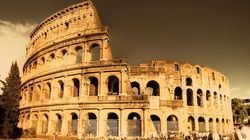
The Colosseum
The Roman Forum
From the main entrance on Via dei Fori Imperiali, descend into the extraordinary archaeologial complex that is the Foro Romano. This was once the heart of Republican Rome, the austere enclave that preceded the hedonistic society of the emperors and the pleasure-crazed citizens of imperial Rome from the 1st to the 4th century AD. It began life as a marshy valley between the Capitoline and Palatine hills—a valley crossed by a mud track and used as a cemetery by Iron Age settlers. Over the years a market center and some huts were established here, and after the land was drained in the 6th century BC, the site eventually became a political, religious, and commercial center—namely, the Forum.
Hundreds of years of plunder reduced the Forum to its current desolate state. It's difficult to imagine that this enormous area was once Rome's pulsating heart, filled with stately and extravagant temples, palaces, and shops, and crowded with people from all corners of the empire. Adding to the confusion is the fact that the Forum developed over many centuries; what you see today are not the ruins from just one period but from a span of almost 900 years, from about 500 BC to AD 400. Nonetheless, the enduring romance of the place, with its lonely columns and great broken fragments of sculpted marble and stone, makes for a quintessential Roman experience.
Day Three
aroque Rome Tour – 4 hrs
You will be picked up by your English speaking guide in Rome and you will begin your guided tour from Piazza del Popolo.
With its obelisk and twin churches, this immense square is a famed Rome landmark. It owes its current appearance to architect Giuseppe Valadier, who designed it about 1820, also laying out the terraced approach to the Pincio and the Pincio's gardens. It marks what was for centuries the northern entrance to the city, where all roads from the north converge and where visitors, many of them pilgrims, would get their first impression of the Eternal City. The desire to make this entrance to Rome something special had been a pet project of popes and their architects over three centuries.
The piazza takes its name from the 15th-century church of Santa Maria del Popolo, huddled on the right side of the Porta del Popolo, or city gate. In the late 17th century, the twin churches of Santa Maria in Montesanto (on the left as you face them) and Santa Maria dei Miracoli (on the right) were added to the piazza at the point where Via del Babuino, Via del Corso, and Via di Ripetta converge.
The piazza has always served as a meeting place, crowded with fashionable carriages and carnival revelers in the past. It's now a pedestrian zone and serves as a magnet for the fashionable young and old at its caffè tables.
You will then reach Piazza di Spagna.
Piazza di Spagna

Piazza di Spagna
That icon of postcard Rome, the Spanish Steps—called the Scalinatella di Spagna in Italian—and the Piazza di Spagna from which they ascend both get their names from the Spanish Embassy to the Vatican on the piazza, opposite the American Express office—in spite of the fact that the staircase was built with French funds in 1723. In an allusion to the church of Trinità dei Monti at the top of the hill, the staircase is divided by three landings (beautifully banked with azaleas from mid-April to mid-May). For centuries, the Scalinatella ("staircase," as natives refer to the Spanish Steps) has always welcomed tourists: 18th-century dukes and duchesses on their Grand Tour, 19th-century artists and writers in search of inspiration—among them Stendhal, Honoré de Balzac, William Makepeace Thackeray, and Byron—and today's enthusiastic hordes. Bookending the bottom of the steps are two monuments to the 18th-century days when the English colonized the area: to the right, the Keats-Shelley House, to the left, Babington's Tea Rooms, both beautifully redolent of the Grand Tour era.
You will then visit Trevi Fountain.
Trevi Fountain
Alive with rushing waters commanded by an imperious Oceanus, the Fontana di Trevi (Trevi Fountain) earned full-fledged iconic status in 1954 when it starred in 20th-Century Fox's Three Coins in the Fountain. As the first color film in Cinemascope to be produced on location, it caused practically half of America to pack their bags for the Eternal City. From the very start, however, the Trevi has been all about theatrical effects. An aquatic marvel in a city filled with them, the fountain's unique drama is largely due to the site: its vast basin is squeezed into the tight meeting of three little streets (the "tre via", which gives the fountain its name) with cascades emerging as if from the back wall of Palazzo Poli.
Not to be missed is the Pantheon, one of the wonders of the ancient world, this onetime pagan temple, a marvel of architectural harmony and proportion, which is the best-preserved monument of imperial Rome.
The tour will end in Piazza Navona.
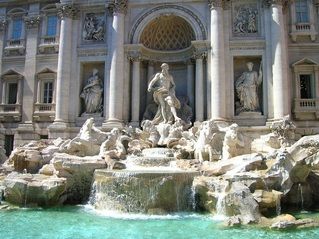
Fontana di Trevi
Piazza Navona
Here everything that makes Rome unique is compressed into one beautiful Baroque piazza. Always camera-ready, Piazza Navona has Bernini sculptures, three gorgeous fountains, a magnificently Baroque church (Sant'Agnese in Agone) and, above all, the excitement of people out to enjoy themselves-strolling, caffè-loafing, seeing, and being seen. The piazza has been an entertainment venue for Romans ever since being built over Domitian's circus (pieces of the arena are still visible near adjacent Piazza Sant'Apollinare). The square still has the carefree air of the days when it was the scene of medieval jousts and 17th-century carnivals—even now it's the site of a lively Christmas "Befana" fair. The piazza still looks much as it did during the 17th century, after the Pamphili pope Innocent X decided to make it over into a monument to his family to rival the Barberini's palace at the Quattro Fontane. At center-stage is the Fontana dei Quattro Fiumi, created for Innocent X by Bernini in 1651. Bernini's powerful figures of the four rivers represent the four corners of the world: the Nile; the Ganges; the Danube; and the Plata, with its hand raised. One story has it that the figure of the Nile—the figure closest to Santa' Agnese in Agone—is hiding its head because it can't bear to look upon the church's "inferior" façade designed by Francesco Borromini; in fact, the facade was built after the fountain, and the statue hides its head because it represents a river whose source was then unknown.
Day Four
Private Transfer from Hotel to Civitavecchia Port
Your English speaking driver will pick you up at the hotel in Rome and he will drive you to Civitavecchia port.
GENERAL NOTES FOR THE ABOVE PROGRAMS
- Our drivers are all very friendly and helpful with clients and our cars are always luxury cars.
- Our English speaking guides have a perfect command of the English language and are carefully selected for their friendly personality. They are all used to work with families and individual clients.
- If the excursions are confirmed we will be glad to provide a list of nice restaurants where clients can have their meals and eat a la carte.
- We have an emergency number which is switched on 24 hours and it can be used for any occurrence during the stay in Italy.
- Passenger’s Mobile phone: in order to arrange an efficient and quality transfer service, we kindly ask the passenger’s mobile phone number. Airports and railway stations are crowded and we know from experience that sometimes the client does not see the driver even if a signboard is clearly shown. The only chance for our driver to locate a person is to call on his mobile phone.
What we do to secure your transfer and guide services:
- All the suppliers are carefully selected and monitored.
- For every service there is a written order and a clear confirmation.
- A day before, every service is reconfirmed with the driver and the guide.
Call us: (305) 442-2008
Toll-Free: (800) 399-5597





Wyllys Professional Travel, Inc is registered with the State of Florida as a Seller of Travel. Registration No. ST35977
All Rights Reserved | Wyllys Professional Travel


